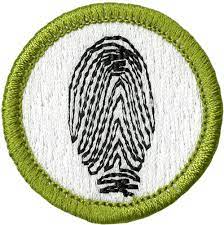Other topics in the Unit
|
|
How are electrons arranged in an atom?
What are the trends in the periodic table? What are the different types of bonds between atoms? |
How are trends in the periodic table explained using the idea of attraction and repulsion of electrons and nucleus?
How does electron transfer within atoms relate to colours in everyday materials? How are intermolecular forces related the the physical properties of the substances? |
How are orbital diagrams correctly filled to represent the electrons distribution in an atom?
How is the electron domain and molecular domain geometry of covalent compounds identified? |
Can all trends in the periodic table be explained with the idea of attraction and repulsion of electrons and nucleus?
Can the geometry of covalent compounds be determined by looking at the attraction and repulsion of electrons and nucleuses' of the atoms in the compound? |
Vocabulary sheet
| |||||||
Unit description
This unit is discussing how the concept of attraction and repulsion between electrons and nuclie can expain the structure of the atom, periodic trends and chemical bonding. Throughout the unit we are going to focus on the atomic structure and bonding of chemical in materials, in particular art materials.
Transfer goal
Make and use observations to identify, analyse and explain to DP Visual Art students the relationship between the atomic structure/bonding of chemicals (particularly metals/transition metals) in art materials and the colours/colour changes in paints and pottery glazes, as well as texture changes in clay during the firing process. In addition, apply concepts learned to demonstrate to DP Visual Art students how to make paints and fire clay.
Introduction to the topics in this unit - Essential ideas
|
2.1 The mass of an atom is concentrated in its minute, positively charged nucleus
2.2 The electron configuration of an atom can be deduced from its atomic number. 12.1 The quantized nature of energy transitions is related to the energy states of electrons in atoms and molecules. |
3.1 The arrangement of elements in the Periodic Table helps to predicttheir electron configuration.
3.2 Elements show trends in their physical and chemical properties across periods and down groups. 13.1 The transition elements have characteristic properties; these properties are related to their all having incomplete d sub-levels. 13.2 d orbitals have the same energy in an isolated atom, but split into two sub-levels in a complex ion. The electric fi eld of ligands cause the d orbitals in complex ions to split so that the energy of an electron transition between them corresponds to a photon of visible light. |
4.1 Ionic compounds consist of ions held together in lattice structures by ionic bonds.
4.2 Covalent compounds form by the sharing of electrons. 4.3 Lewis (electron dot) structures show the electron domains in the valence shell and are used to predict molecular shape. 4.4 The physical properties of molecular substances result from different types of forces between their molecules. 4.5 Metallic bonds involve a lattice of cations with delocalized electrons. 15.1 Larger structures and more in-depth explanations of bonding systems often require more sophisticated concepts and theories of bonding. 15.2 Hybridization results from the mixing of atomic orbitals to form the same number of new equivalent hybrid orbitals that can have the same mean energy as the contributing atomic orbitals. |










